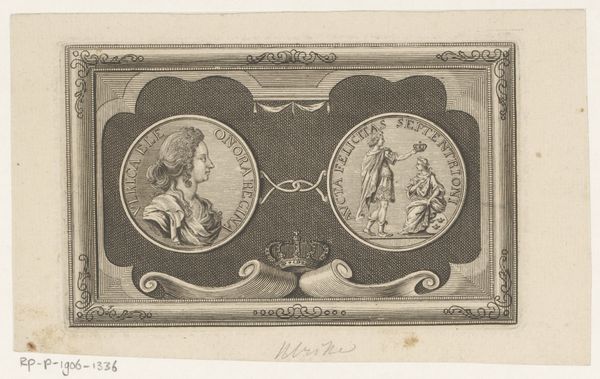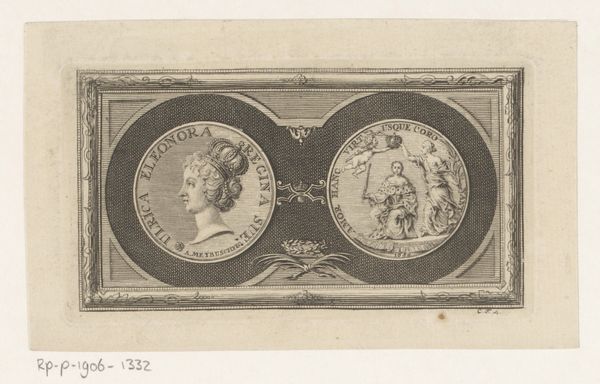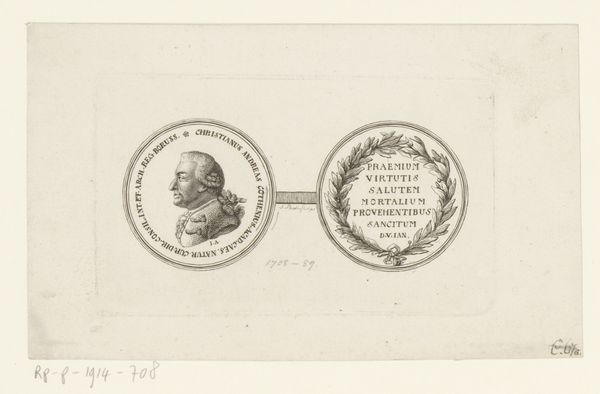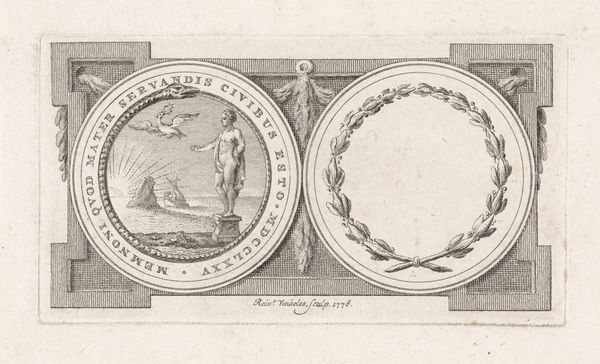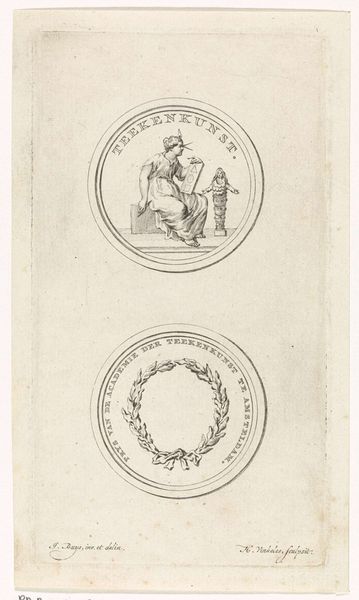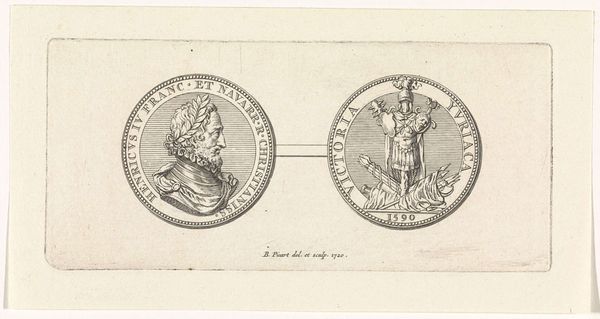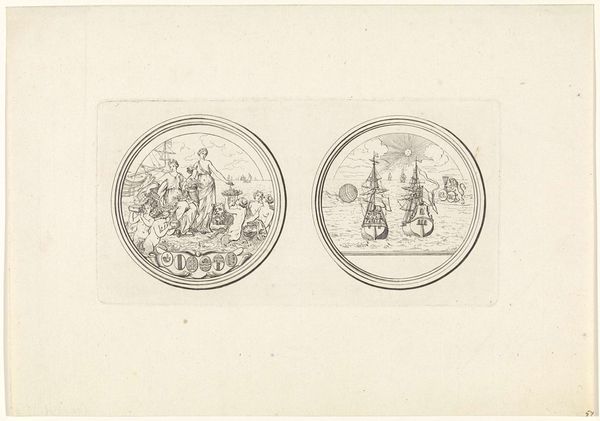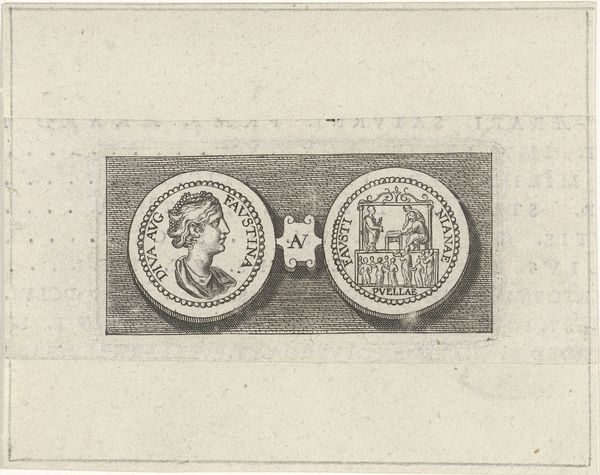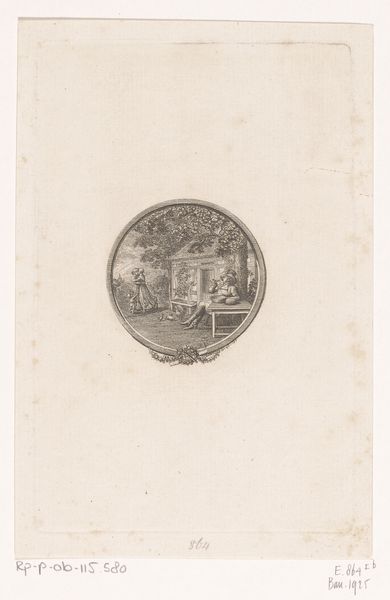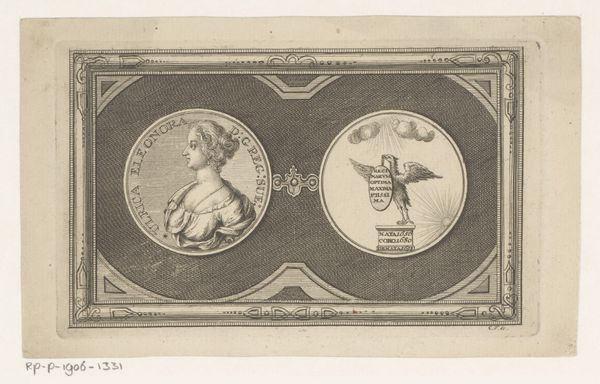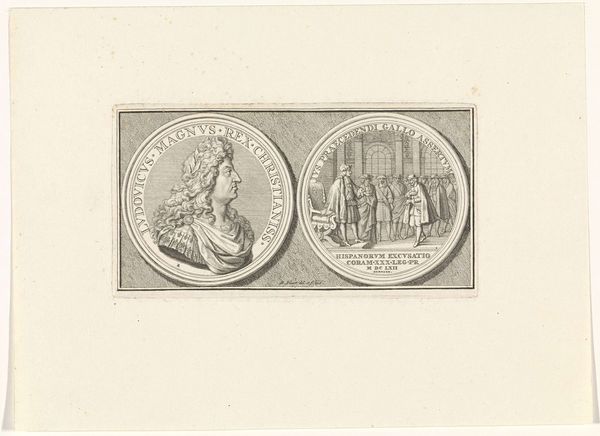
print, engraving
#
portrait
# print
#
classical-realism
#
figuration
#
history-painting
#
engraving
Dimensions: height 56 mm, width 112 mm
Copyright: Rijks Museum: Open Domain
Editor: This is a historical print from the Rijksmuseum, entitled "Historiepenning met zittende Minerva, 1574", although it was actually produced between 1721 and 1723. The print, an engraving, features Minerva, the Roman goddess of wisdom and strategic warfare. It looks like she is holding a book and a spear and sitting in front of some heraldic symbols. It strikes me as quite formal and allegorical. What do you see in this piece? Curator: Indeed. The formal, allegorical nature speaks volumes. I'm particularly drawn to how Minerva is portrayed here, not just as a symbol of wisdom, but as a figure of authority during a turbulent time. Consider the year, 1574, referenced in the title - it was during the Eighty Years' War. What might Minerva, representing strategic warfare, communicate to the public amid conflict, in your opinion? Editor: I guess she is embodying power and resistance in a moment of crisis? Is the reference to the past, and the classical imagery of Minerva, an appeal to a kind of imagined golden age? Curator: Precisely. The print engages with the complexities of Dutch identity and resistance. It attempts to ground the revolt against Spanish rule by constructing an image of national fortitude rooted in historical and classical symbolism. Also, note how Minerva is literally *enshrined* within the coin. She becomes a type of propaganda for patriotism during conflict. Do you think this impacts how we understand the piece today? Editor: I think that knowing the historical context definitely reframes it. It makes me wonder who the printmaker was and who they were hoping to reach. I suppose, without context, it would seem like an old image from a coin; but viewed historically, I see the clear intention of creating an association between Dutch freedom and classical authority. Curator: Exactly. It reveals how the artist subtly intertwines art, politics, and identity. Examining art through an intersectional lens reveals these hidden yet powerful commentaries. Editor: It definitely challenges the seemingly straightforward image! Thanks, that was fascinating!
Comments
No comments
Be the first to comment and join the conversation on the ultimate creative platform.
